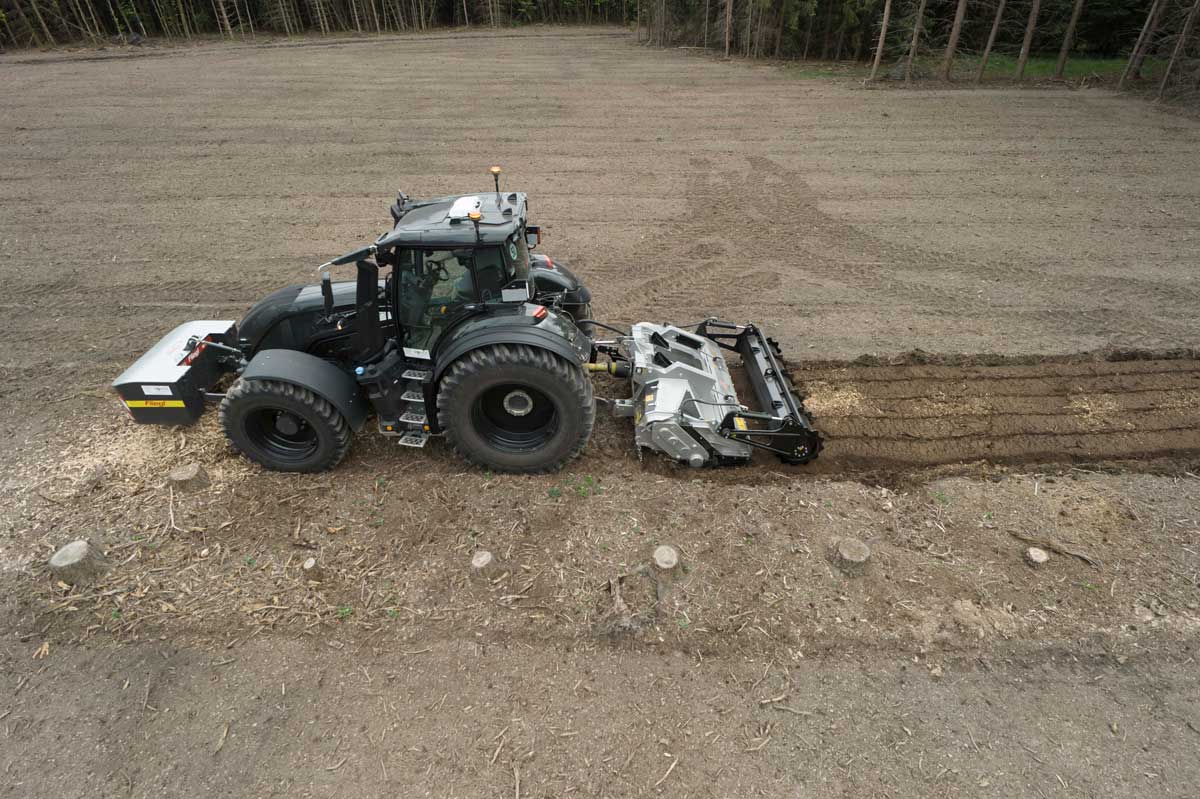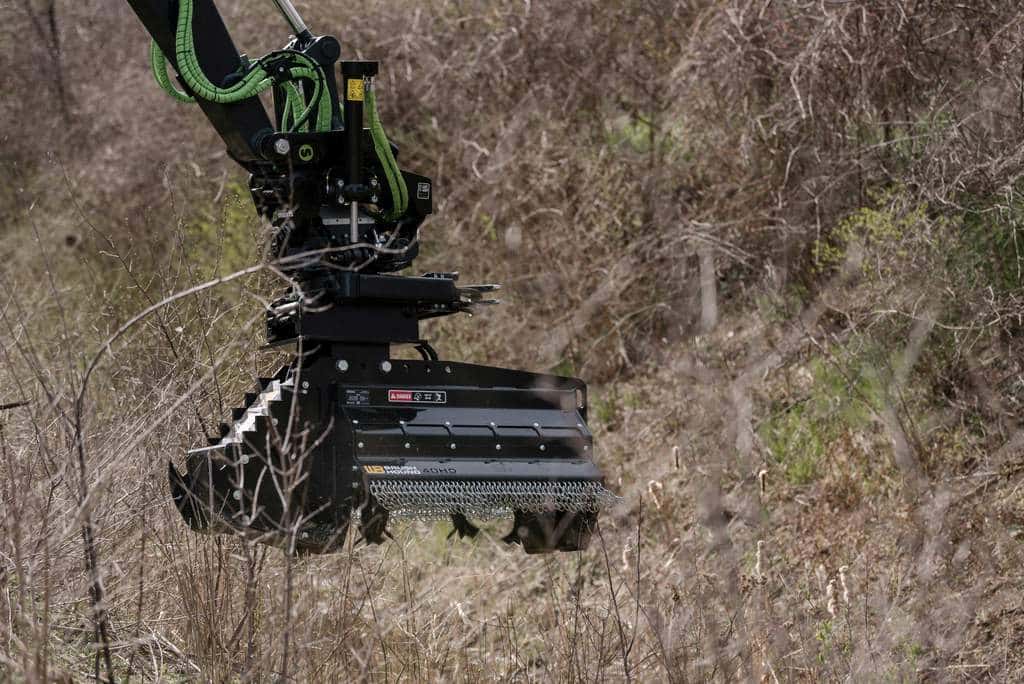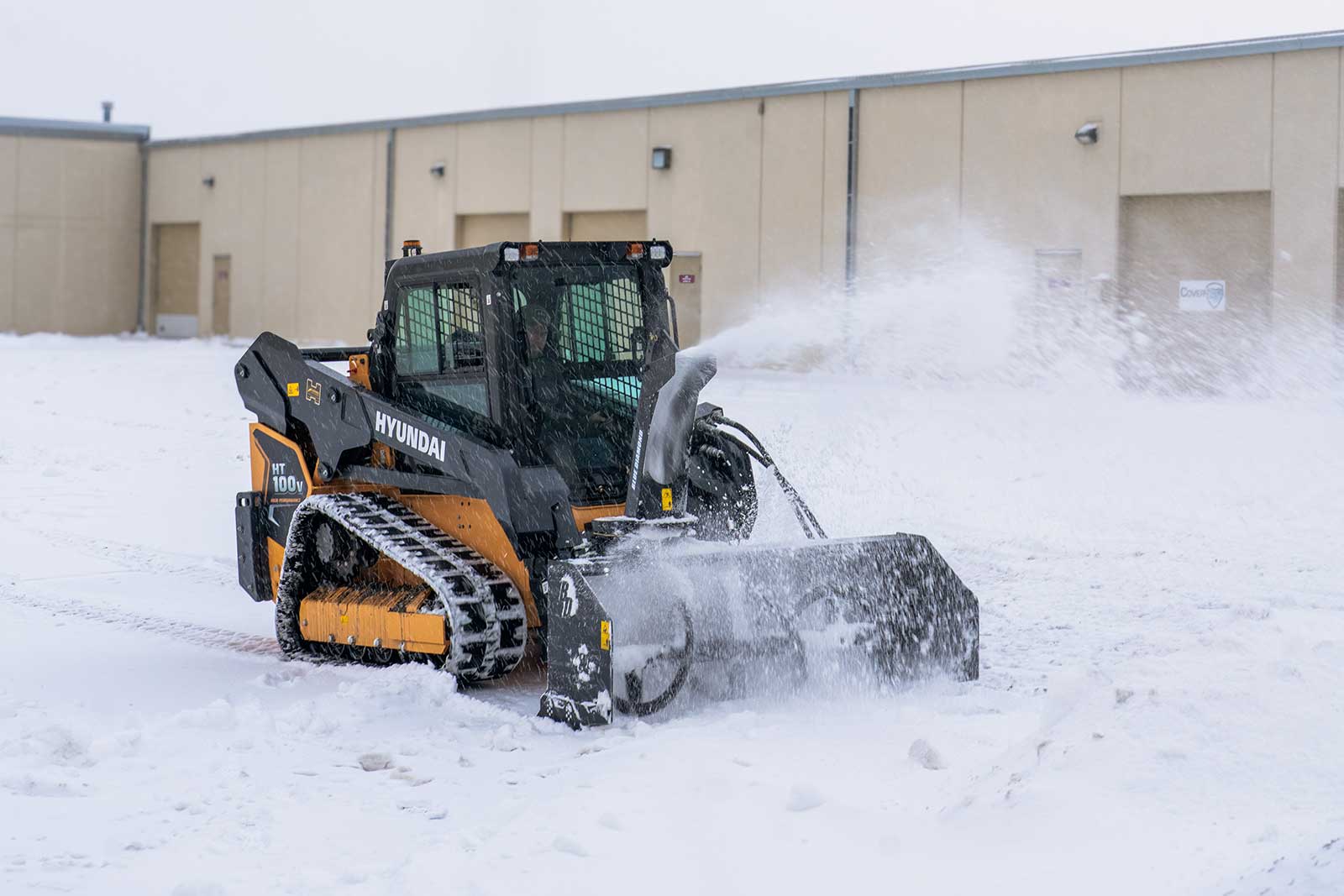Equipped to Dig: Pair Your Compact Tractor with a Backhoe for Even More Productivity
Armed with the right attachment, compact utility tractors can tackle lots of different projects. Whether you’re a farmer, large land owner or even a contractor, these machines offer enough toughness and power to perform commercial work and a variety of attachments to diversify your operations. One particularly useful attachment is a backhoe.
“Adding a backhoe attachment to a compact utility tractor adds versatility for the operator,” says Ray Gherardini, product marketing manager for compact utility tractors at John Deere. “With a backhoe attachment, an operator can easily perform material-moving jobs, like transplanting a tree or moving a large rock, and excavation activities such as trenching a water line or digging a pit.”
Before you hurry to a dealer to buy a backhoe, let’s discuss some features to look for in this specific attachment.
“When selecting a backhoe attachment, it’s important to prioritize functionality and comfort, in addition to performance specs,” says Joel Hicks, senior product support manager for Kioti Tractor. “Pay attention to the layout of the controls and the ease of use for attaching and detaching. Also, be sure to consider what size bucket you need — which depends on the jobs you’re planning — and whether you need a thumb for jobs like cleaning up loose brush.”
Dig depth is perhaps the most important decision when selecting a backhoe. While dig depths can vary depending on the brand of backhoe attachment, a typical range is 6 to 9 ft.
“The digging depth of the backhoe attachment will vary depending on the size of the backhoe and the compact utility tractor,” says Gherardini. “The rule of thumb is the larger the tractor, the deeper the backhoe attachment. For example, with the John Deere 260B backhoe attachment for the 1 Series and 2025R compact utility tractors, the digging depth is 6 ft, 2 in.”
Kioti offers backhoes in 6-, 6.5-, 7.5- and 8.5-ft dig depths. Hicks also mentions that if an operator will be in the dirt a lot, there are different types of stabilizer pad options available for consideration.

“Kioti offers a street pad and a big foot dirt pad,” he says. “The street pad is designed with rubber inserts to increase grip and reduce vibration on hard surfaces like concrete or asphalt. The big foot dirt pads have teeth that provide additional grip in loose soil or muddy conditions to help prevent sliding when digging with the backhoe.”
Some other key features that customers should consider are boom lift capacity, transport dimensions and ergonomic controls. Also, whether to buy or rent the attachment.
“Owning versus renting depends on the customer and their needs,” says Gherardini. “For example, for many of our customers, the ease of installing or removing the 260B backhoe attachment from a compact utility tractor makes it an attractive investment. Attachment cost varies depending on the size of the backhoe as well as the attachments that can be purchased with it. It is best to consult with your local dealer when determining the right backhoe for your needs.”
After selecting the right backhoe, next is putting it to work. Hicks says backhoe installation can vary depending on the brand of backhoe but is usually pretty simple.
“First, back the tractor up to the attachment and connect the hydraulic lines to power the backhoe,” he says. “Then, raise the backhoe and place it in a three-point stance to stabilize it. Once it’s stable in the three-point stance, get back on the tractor and slowly back up aligning the tractor with the backhoe. Finally, lock it onto the tractor. Raise the backhoe into the transport position, and you’re ready to get to work.”
Backhoe Safety Tips
By Joel Hicks, Kioti Tractor’s Senior Product Support Manager
1. Stay steady. First and foremost, never use a backhoe if a loader isn’t installed on the tractor for counterbalance. Second, when using the backhoe, ensure that the loader bucket and stabilizers touch the ground for steadiness. In other words, use the loader bucket and the two stabilizers as the three touch points with the ground for stability purposes. By doing so, you transfer weight to the backhoe and provide the most stable platform for digging operations. 2. Stay grounded. It’s important to note that backhoes for utility tractors are not designed to operate like a construction backhoe, where many times you see the tractor wheels coming off the ground. Utility tractors and backhoes are not fully subframed and structurally rigid products like their construction counterparts. Performing digging applications with all four wheels fully suspended in the air on a utility tractor is not recommended to maintain safety. This could lead to premature failure of the tractor or backhoe components. 3. Stay aware. Backhoe use is for the operator only. So for safety, make sure no one is standing close to the machine or the operator station when in use. Check your surroundings and what’s in the ground — like power and water lines — before operating, so you’re not at risk of damaging anything.




